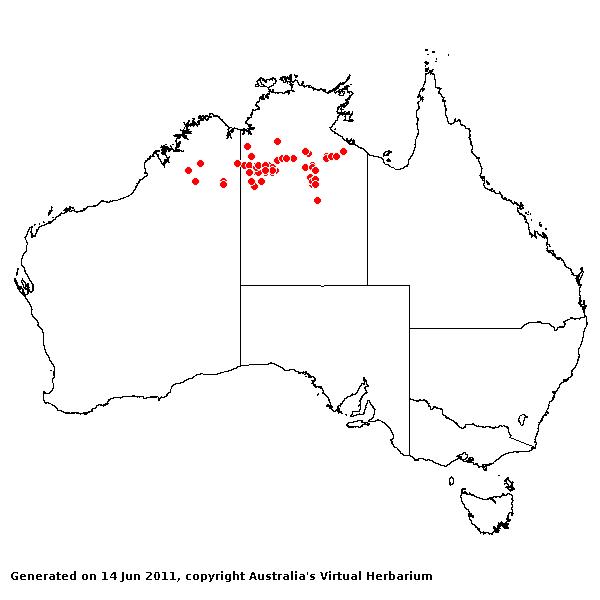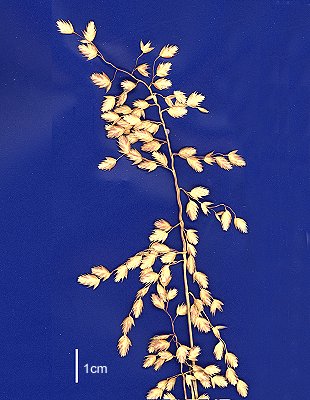Triodia inutilis N. T. Burbidge. Austral. J. Bot. 1: 163 (1953).
Classification. (GPWG 2001) : Subfamily Chloridoideae. Triodeae.
Type of Basionym or
Protologue Information: Australia: Northern Territory: 13 mi SW of Wave
Hill Station, 21 Jun 1949, R.A. Perry 2199 (HT: CANB; IT: BRI, CANB,
DNA, K, MEL, NSW, US).
Key references
(books and floras): [2002] D.Sharp & B.K.Simon, AusGrass, Grasses of
Australia.
Habit.
Perennial. Stolons present. Culms 30–130 cm tall. Mid-culm nodes pubescent.
Leaf-sheath auricles absent. Ligule a fringe of hairs. Leaf-blades straight,
aciculate, conduplicate, 5–21(–35) cm long, 0.7–2 mm wide.
Inflorescence.
Inflorescence compound, a panicle. Panicle linear or elliptic or ovate, 9.5–26
cm long, 2–6 cm wide.
Spikelets.
Spikelets pedicelled. Fertile spikelets many flowered, with at least 2 fertile
florets (7–9), comprising 7–9 fertile floret(s), with diminished florets at the
apex, oblong or ovate, laterally compressed, 6–10(–13) mm long.
Glumes.
Glumes similar, thinner than fertile lemma. Lower glume lanceolate or oblong,
scarious or cartilaginous, without keels, 3–5 -nerved. Lower glume surface
glabrous. Lower glume apex muticous or mucronate. Upper glume lanceolate or
oblong, 3.5–6 mm long, scarious or cartilaginous, without keels, 3–5 -nerved.
Upper glume surface glabrous. Upper glume apex entire, muticous or mucronate.
Florets.
Fertile lemma 4–5(–7) mm long, without keel, 5–9 -nerved. Lemma surface
indumented. Lemma apex lobed. Anthers 3.
Continental
Distribution: Australasia.
Australian
Distribution: Western Australia, Northern Territory.
Western Australia:
Fitzgerald, Hall. Northern Territory: Victoria River, Barkly Tableland.
Notes.
Distinguished by the dense panicle; subequal, mucronate usually 3-nerved glumes
usually 1/2–2/5 as long as spikelet; partly hirsute lemmas with subequal
acuminate lobes 1/3–3/5 as long; divergent or recurved lateral lemma lobes in
mature spikelets; usually glabrous and smooth paleas almost as wide as long,
with prominent keel wings visible in situ; indumentum of woolly, tangled
hairs on orifice margins and often on leaf sheaths.
Between
15°S and 18°S, and 127°E and 136°E in W.A. and N.T. On crests and slopes of
hills, mesas, plateaux, gorges, domes, ridges and outcrops; in skeletal or
shallow, sandy often rocky or stony, undulating soils; in association with
sandstone, limestone, laterite, shale and volcanic rocks; flowers Mar.-Aug.,
Dec. and Feb.




